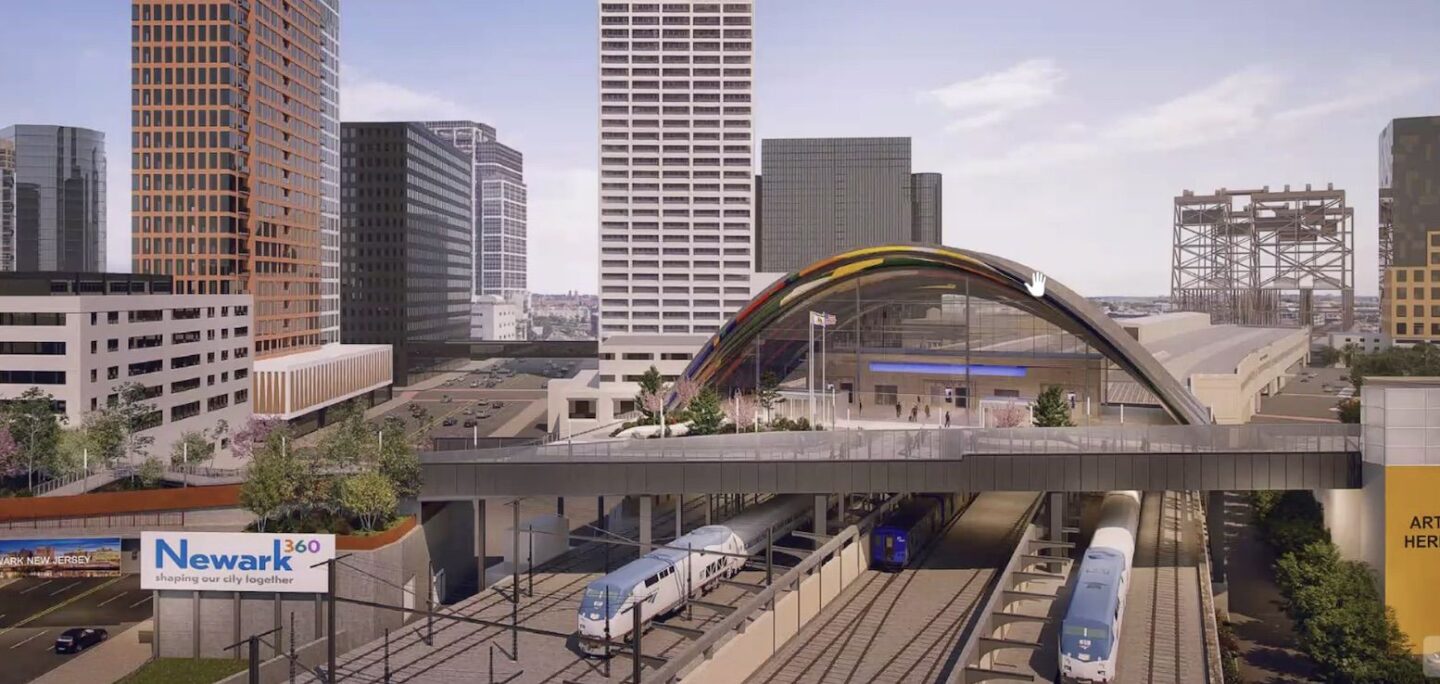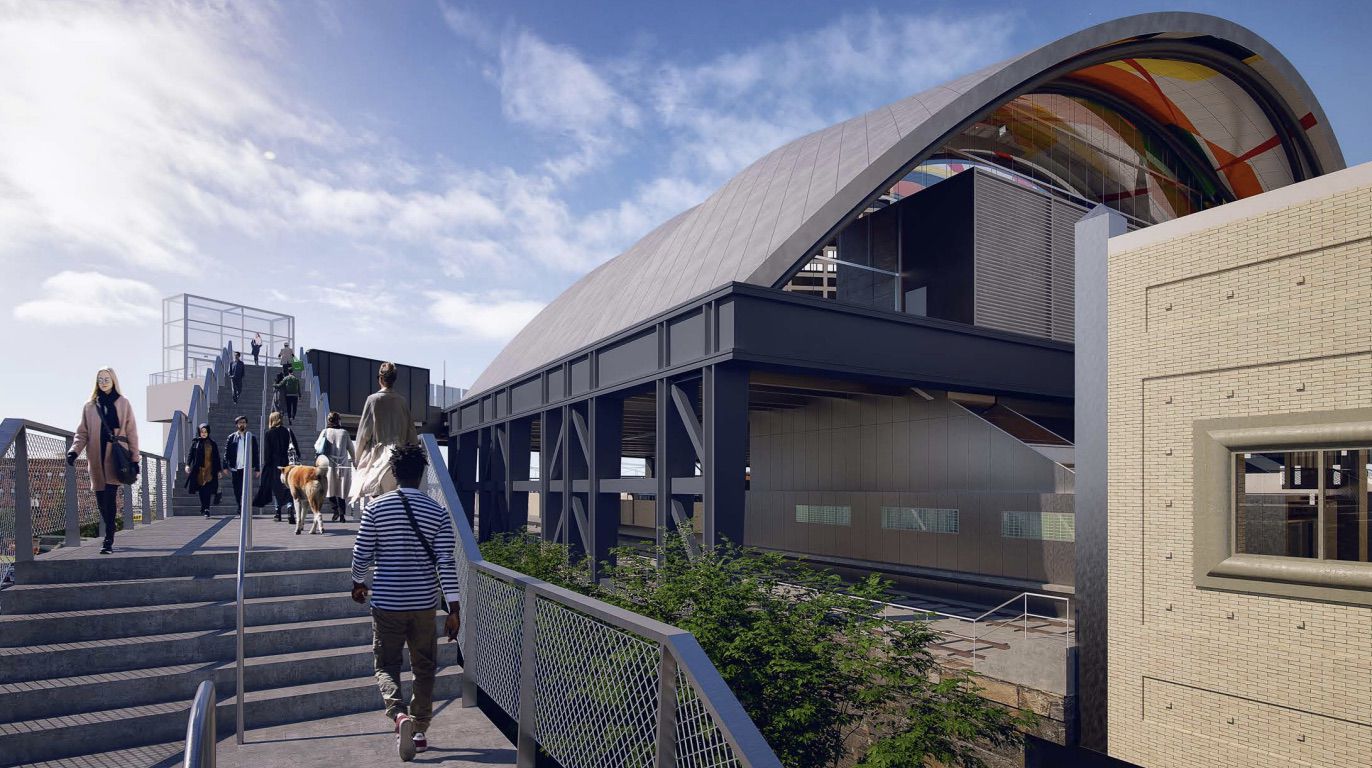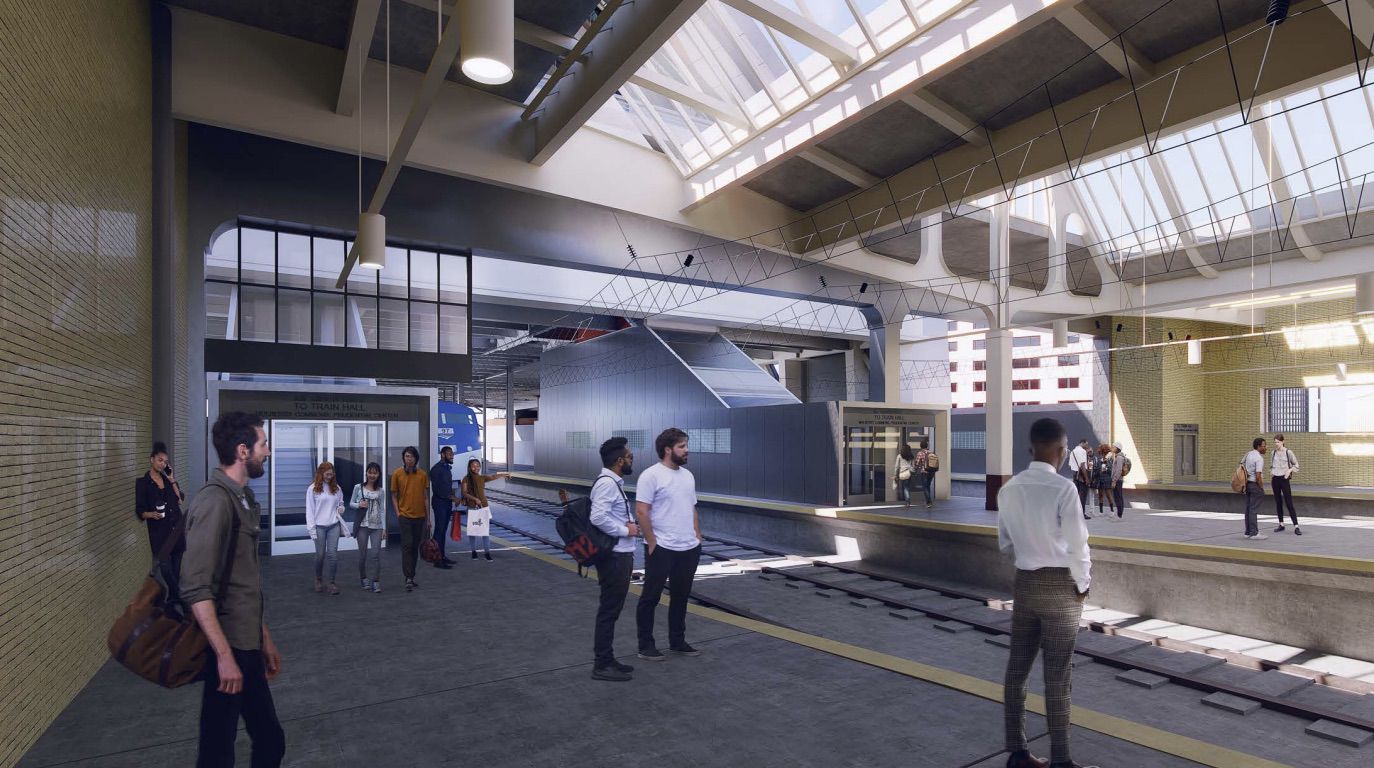
The proposed $110 million pedestrian bridge is good for Newark — no one is arguing otherwise. Tourists and commuters in Mulberry Commons will have direct access to platforms B, D, C, and E in Penn Station, servicing both PATH trains and Amtrak. It will also be easier – and safer – to reach the restaurants and nightlife in the Ironbound without a Hail Mary sprint across a seven-lane speedway.
But for the second time, a major construction project is happening within a national landmark without following the proper protocol of having it approved by the city’s Landmarks Commission.
It is true that the city presented its plan for the pedestrian bridge at the commission’s last meeting. But only as a courtesy. Co-chair Richard Partyka asked the city’s presenter, lawyer Evans Anyanwu, if any of their suggestions would actually be implemented.
“No,” Anyanwu replied.
What the public has seen of the bridge, has been exciting. The colorful archway has the potential to become another beacon like Sacred Heart Cathedral and the National Newark Building. But the plan is by no means perfect. Despite being located in the city’s Arts and Education District, it is oddly devoid of the talents of local artists, one commissioner remarked.
“This should be a public competition for artists to design this,” co-chair Susanna Holguín-Veras said.

And why is the arch’s exterior an opaque gray instead of lit up at night like the Sydney Opera House or the Perelman Performing Arts Center? A structure in the flightpath of one of the nation’s busiest airport that isn’t visible from the planes overhead is a major “missed opportunity,” Commissioner Richard Grossklaus said.
The city’s architectural landscape is better and more inclusive when developers heed the advice of preservationists. Last year, the commission not only saved one of the nation’s most important murals by a female artist but a major Black history site when it demanded that NJPAC spare the Cathedral House.
Preservationists have pushed for better designs of newly built structures as well. Look at the new homes and townhouses being built in Forest Hill and the James Street Commons and compare them to the copy-and-pasted Bayonne Boxes approved in Clinton Hill and Vailsburg.

The last time Mayor Ras Baraka’s administration defied preservationists was for the redesign of Harriet Tubman Square, arguably the most important construction project to happen last year.
“It was never presented to us and then we were asked, do we support the design?” Partyka said. “How can I say we support something we’ve never seen?”
The difference in this case is that there is still time – the pedestrian bridge is only at the midway point in terms of its design. The firm, Sage and Coombe Architects, released renderings of what some of the corridors might look like connecting passengers to their platforms.
Anyanwu contends that these corridors, though connecting to Penn Station, do not fall under the Landmark Commission’s purview. The application will soon go before the state Historic Preservation Office and we’ll have to see if the panel of historians and architects agree with that determination.
One thing that both sides can agree on is they want the best possible finished product for the city. “Like the Arch in St. Louis and the bridge in Australia, those are absolutely fantastic pieces of work,” Grossklaus said. “And this could be the same thing.”